Photos
Right-click [Mac Control-click] to open full-size image:
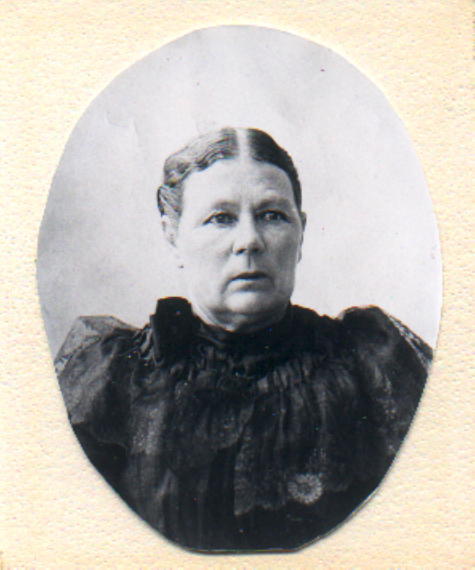
Jane Fleming Ferguson Shaw
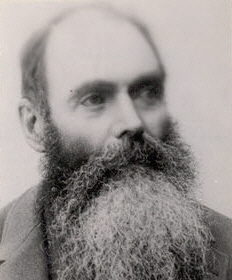
John Allan, Sr.
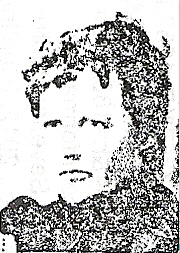
Agnes Allan
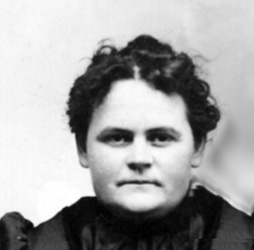
Elizabeth Allan
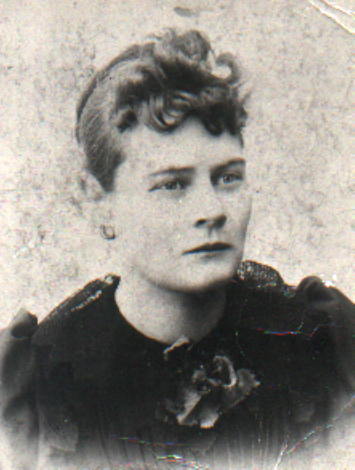
Annie Allan
John Allan
Born: 21 September 1823 at Kirkintilloch, Dunbartonshire, ScotlandJane Fleming Ferguson Shaw
Born: 29 November 1840 in Kilsyth, Stirlingshire, ScotlandLIFE SKETCH JOHN ALLAN AND JANE FLEMING FERGUSON SHAW
Jane Fleming Ferguson ShawJane Fleming Ferguson Shaw was born 29 November 1840 in Kilsyth, Stirlingshire, Scotland, to Alexander and Elizabeth Ferguson Shaw. After her father’s death in 1853, the family determined to save up what they could to make the move to Utah. Jane and her widowed mother and four siblings came to Utah in 1868. Jane’s mother, Elizabeth, had a cheerful disposition and untiring faith and courage. These qualities helped her family as they walked the weary miles over rough roads through hills and valleys on their way to Utah. After arriving in Utah, the family settled in Coalville, Summit County.
Jane was married to John Allan on 15 November 1869 and was his plural wife. John was living in Coalville with his first wife, Agnes and his three sons. He had also come from Scotland in 1855 with the Charles A. Harper Company. Jane unselfishly devoted herself to her husband’s interests and moved to “pioneer” several different places with his family.
The Allan family moved south to Richfield, Sevier County, where Jane’s three oldest children were born: Agnes (1871), Elizabeth (1873) and Annie Jane (1875). It was a test of faith when the family was called to go to the wilds of Colorado in 1878. The first year they lived in a Mexican village. Later they lived on a ranch near Manassa, Colordo. Jane was a wonderful cook and no one ever left her home hungry. While living at the ranch near Manassa, she prepared meals for the church authorities who came from Salt Lake City. Jane and her family attended church every Sunday at Manassa, ten miles away.
John Allan moved his first family to San Juan County in Utah. Jane and her family followed soon after. They settled Fort Montezuma (now Montezuma Creek) on the San Juan River. Jane and John’s last two children were born here: Florence (11 August 1881) and John Alexander (22 November 1882). They lived there until a flood destroyed their home in 1884, after which they moved to Bluff.
In the fall of 1890, a family came to Bluff and brought the disease, diphtheria. Jane, in her kindness, responded to their pleas to come to their home and help. As a result, Florence, John Alexander and Annie Jane contracted the disease. There were no doctors around. John Alexander died 20 days later and Florence died two days after John Alexander.
Jane did washing, ironing and baked bread for many years for Agnes, John’s first wife. When Agnes had a broken hip, Jane took meals to her to help make her life more pleasant. She built a five-room house after her husband, John passed away (27 April 1908) and spent a happy time for a short period. The floods came to the area and surrounded her home. She climbed the haystack and said she never felt alone until a wave of water went over her feet.
Jane loved life and the fine things of life. She died 27 May 1915, at Bluff, San Juan County, Utah.
John AllanJohn Allan was born in Scotland in affluent circumstances but when the gospel found him, he left all his worldly goods to his kindred and friends and arrived in Utah with his young wife, Agness, in 1855. From then on his life was concerned with the hardship of a frontier life. He pioneered in five early settlements, some of them in the roughest country on earth.
Jane F. Shaw also came from Scotland for the gospel’s sake in 1858. She had been out to service since she was eight years old, being the eldest of a family of seven children. She was a very refined and cultured young woman who never allowed the hardships through which she passed to dim her ideals. Her daily toil could easily have excused an untidy appearance but her love for cleanliness and beauty kept her sweet and lovely and charming. Her courage and devotion to others, her giving of her best, handing out the material comforts of life, feeding the smelly Indians and going without herself—these were the joys of her life. When she accepted the gospel, she saw an opportunity for sacrifice and service. She gave up her lover and became the plural wife of John Allan, though he was old enough to be her father, and devoted herself to his interests and welfare the rest of her life. A whole volume could be written extolling her virtues.
Five children came to John and Jane Allan. Agness, the first wife, had no children of her own but was one of the best of mothers to John’s three motherless boys: Johnny, Peter and Robert. Jane’s children were: Agnes, Elizabeth, Annie Jane, Florence and John Alexander.
In 1878, John Allan and his two families were called by Apostle Erastus Snow to pioneer in San Luis Valley on the Conejos River [south central border of Colorado]. The first year the families stayed at a Mexican village, where John’s son, Peter, taught school. Later John Allan settled in Manassa [same area in Colorado] with his first family and was called into the Bishopric.
Jane and her family were on a ranch eight miles away on a hillside above the river. There were green meadows below but there were rattle snakes in abundance. Jane was kept busy doctoring the dog whose head would swell up as big as a bucket because of the snake bites. Wild animals were thick all around. Wild ducks and geese were everywhere. Step-son, Robert, (Bob they called him) found eggs belonging to the wild creatures and Jane put them under her hens, [and] thus Jane increased her flock of poultry. Here on the ranch, they also ran a small dairy. They sold butter at Alamosa, Colorado. The cattle had wicked horns and were wild. Jane had to do the milking and she earned all she made. Travelers, both white people and Mexicans, stopped at the ranch for something to eat or to stay over night.
One night at sundown, a Mexican came in sight but the dog refused to let him come near the house. All the scolding Annie’s mother could do did no good. He was not allowed to enter. Later that same night, a posse of men awakened the household to ask if a Mexican had been around. A little white girl had been killed and her body had been found on the hillside not many miles away from the place. They never doubted the wisdom of the dog after that.
One day, the little girls were out in a wagon with their father to get wood. Among the things they told of was seeing seven wild cats up in one tree. They also saw a coyote that their father had killed in the night when he had been aroused by the squealing of a pig. He had gone out and found the pig in the mouth of the coyote and had killed it and saved the pig for the eating of those in whom he was more interested. They saw and talked of these things. The wind blew fierce and strong and they pulled the quilts up over their faces to protect their eyes from the sharp pebbles that stung their tender young faces.
The Sabbath was strictly observed even if more butter could be made when they stayed home. The sixteen mile trip to Manassa and back over the rocky roads and the wind creeping in and dust and gravel it picked up and threw in their faces—these were of small importance when it came to missing their meetings. If Bob were along he drove, if not, Jane did. The little girls lay covered in the bottom of the buggy covered up from any danger of cold or flying stones. Jane would milk the cows before and after the long trip and drive all the way while her flock cuddled under shelter. She said they would have enough to meet in life if she shielded them as long as she could. These were her golden hours of showering hr loving devotion on her precious daughters who lay covered with a quilt in the bottom of the moving vehicle. Surely Jane, you must have often rejoiced in the stern stuff in those daughters you nurtured so jealously.
The near neighbors were the MacIntyres who lived below them on the river. They were not Mormons but they were fine people and took a kindly interest in each of the Allans--a personal interest. Mr. MacIntyre was later made Governor of Colorado and that made the Allans happy.
John Allan was a taxidermist. He would mount with life-like precision birds of all description. He loved them. He never killed them except for a good and sufficient cause. The harmony of color with which his skilled eye and hand perfected this work was always a source of great pride to his daughter, Annie. She [had] a collection in her home of which she [was] justly proud. His work was the admiration of all who knew him. Many of their neighbors said that their knowledge of birds is what he has taught them. He knew the habitat of every feathered creature in the known world. His library was very extensive and was left as a treasured heirloom to his family. The one “A Great Naturalist” who was Thomas Edwards, was loaned among the young folks in after years until it was worn out. Mr. MacIntyre’s brother, Sam Vance, was also a taxidermist and the two had a binding bond of kindred interest.
During the winter of 1880-1881, Apostle Erastus Snow made his home with the Allan family. He was having to keep well out of the public sight because of his views on plural marriage. In 1881, Apostle Snow released John Allan from the Conejos Mission and called him into the San Juan Mission. John exchanged claims with Silas S. Smith and settled with his family about eighteen miles above the town of Bluff on the San Juan River. Their claim was a mile east of the fort in Montezuma.
Another daughter, Florence, was born in a tent on the Montezuma before the folks were settled in their new quarters. Her birthday was 11 August 1881. About a year and a half after that Jane’s only son, John A., was born.
That winter they were settled comfortably in nice log cabins built of cottonwood logs. On the Montezuma, called so because of its location on Montezuma Creek which emptied into the San Juan River, Annie’s father constructed a huge water wheel that turned out an abundance of water for their fields of cane and corn and other stable products. They planted and matured a beautiful big orchard. They raised all kinds of vegetables. John Allan was a rare molasses maker. He knew every angle of the process necessary to perfect a molasses that was a real delicacy. He skimmed every offending element from the boiling juice until the finished article was well sought after and brought a good price in all the country around. Annie (1875), Elizabeth (1873), and Agnes (1871) had the task of a great deal of the work. Of course, the men folks took the brunt of the hard work, but there was plenty that could well be shunted on to the shoulders of the little girls. [Making molasses] they were to top, feed the machine and carry away the pommel and between the three of them they produced three tubs of juice [for molasses making] a day.
The Allan’s lived on the Montezuma about four years. They were prospering but in the early summer of 1884 something happened. Rain came down in torrents. The head of the San Juan River was a seething mass of torrents. The floods that flowed down into San Juan, though not as great as up above, were still completely beyond control. Its banks were swollen to overflowing and all the bottom lands were flooded. John Allan and his two older boys were away in New Mexico. They had all the teams [wagons and horses] with them. All that were home were Agnes (first wife), Bob, Jane and her four young children (Elizabeth, Annie, Florence (1881) and John (1882)).
As the river rose, Jane moved to another home because the water was washing so near to her home. This other home was on high ground up nearer the bluff. The Indians brought word that a big flood was coming from up in Colorado. Jane and her girls were out looking at what could easily turn into disaster. She saw the little wagon wheel that John A had thrown into the river. He stood there shouting as it floated around on top of the water. As she looked she saw a great mountain of water raging toward them. There was panic immediately. One lone mule was on the farm. Bob straddled the mule and raced for help to the neighbors a mile and a half below them. They came to the rescue with a team and wagon. As much of the household goods as possible were moved up against the bluffs. “Aunty” as they called Agness senior (John Allan’s first wife) was doing her best with a fire shovel to make a dam by the side of her house to protect against the angry flood.
Little John A. who was right above them and would be swept from his feet the next instant was gathered in loving arms. Before they got to the door of their home, the water was almost to their necks. Elizabeth and Annie saw some precious wash tubs being swept away. They saved them along with some chickens. There was water all over the floor. Jane put little Florence and John A. on the Bedsteads and piled chairs up with bedclothes on them. The older sister, Agnes, had gone with the folks to New Mexico, but father and Peter came home during the excitement. The light wagon was used as long as possible and then John thought of the molasses boiler and they attached a team to it and by swimming the horses, they finally got across to the bluffs. There they pitched a tent and stretched wagon covers and lived under such shelter for several weeks and then moved to a log cabin left by one of the former pioneers on Montezuma. While they were in the old cabin, Jane made it homey by covering the ceiling and the open windows with clean flour sacks.
Apostles Joseph F. Smith and Lorenzo Snow visited them while they lived there. Jane cooked chicken for them and they were profuse in their praise of “Sister Allan.” Annie remembers they sang songs and were pleased with them. She sat on Elder Snow’s lap. The Apostles advised Brother Allan [John] to move to Bluff. Elder Snow told them if they always felt kindly disposed toward the Indians, they would never thirst for their blood. Shortly after reaching Montezuma [three years before] the family made friends with a Navajo by the name of Pejo. He hollered across the river one morning that the Indians were up in arms against a family up the river. Two of their number had been killed and the U.S. soldiers were on their way to the place but that no harm would come to the Allan family because he knew they were friends to the Indians. There had been killings above and below them on the river but none of them had ever been harmed. Brother Snow had told them that the Indians would become friendly. This was actually true.
They moved into the little town of Bluff of about twenty families in the fall of 1884 [after the flood]. John A was then going on three years old. In Bluff [the Allan family] found a fine class of people whose faith and courage was outstanding in pioneer history. Annie and Agnes went to school in the old log house which served for all public gatherings. It had been built in the days of the fort during the hard times of early pioneering. Its twisted cottonwood log walls and the dirt roof with hewn logs for a floor stands still in the memories of many of the young folks who grew to manhood and womanhood in those far-off days. The Christmas parties, the church and school celebrations, the dances, the ball games down by the Old Swing Tree, all of these thrilled the children and added to their childhood store of carefree happy days which were not so carefree as are the days of our people of today.
John Allan had a large field and the hoeing of the weeds in the beans and corn had to be done by those little girls who also had to do their share of the cane growing and the molasses making. Elizabeth was a real mountain of strength in the hoeing. Annie says she furnished all the allurements that kept them going. One day Annie and Agnes were lagging sadly behind standard accomplishment and sent home disheartened. The middle sister [Elizabeth] went back with them in the afternoon ad no weeds remained when they went home again.
In 1890 a great sorrow came to the Allan family. Diphtheria struck the home and took away little Florence and John A. Annie also lay at the point of death. She told the folks afterward of the wonderful dream she had which showed her that her mission on earth had not at that time been accomplished. She was snatched as by miracle from death but it seemed that never again was she a little carefree girl. The experience she went through, the grief of losing the sweet babies, her mother’s sorrow and the attendant heartlessness of the disease all combined to crowd her into mature womanhood and make an impenetrable sheath of courage to face sickness, death, darts of temptation and hardship of disappointment and heartache. In it all she never faltered one iota but remained a tower of strength to those who stood in wonder at her fortitude.
Agnes married a young man, Joseph Frederick (Fred) Adams who had come to Bluff about the time the Allans came to Montezuma at Bluff in December 1891 and they had three children over the next six years. Fred built a rock house in 1895, and judging from the size and quality of this house, Fred was successful in both his livestock and mining interests. He owned several hundred dollars worth of capital stock in the San Juan Pool, a cattle cooperative, and in the San Juan Co-op. He also owned a placer mining claim located 75 miles west of Bluff, where he died unexpectedly of typhoid fever in November 1899. Five years later she married Alfred Henry Pehrson at Manti and returned to Bluff where she three more children. After Alfred Pehrson’s death she turned the rock house into a boarding house and hotel. The house is now listed on the National Register of Historic Places.
Elizabeth met another young man who came to Bluff during the 1890s, William J. Nix, and they married in Salt Lake City in November 1894. They had seven children, and later lived in Blanding.
When Annie was a young woman, she had assumed to be self-supporting and had clerked in Fred Adams’ store in Bluff for the unbelievable sum of $2.00 per week. She had not only kept herself on that but had paid her tithing and by strict resourcefulness had saved enough to take her to the Brigham Young Academy in Provo. Then she went to work for Cunningham Ranch. There she had a family to cook, wash and iron for besides a group of eighteen cowboys. Her weekly pay for all this was $5.00. She met here all kinds of men. She never had the opportunity of attending church, but on Sunday mornings she would sing the songs of Zion as she did her work. The men she met marveled at her charm, her beauty, her unflinchable, unswervable life. Try as they would they had no influence on her. Annie then married Edward F. Thompson in January 1901 at Bluff. They had ten children. living many years in Blanding and moving to Salt Lake City about 1925.
After the girls were married, John, Agnes (first wife) and Jane continued their lives
in Bluff until their deaths, John in 1908, Agnes in 1909, and Jane in 1915.
Sources:
1
Jane Shaw memories on FamilySearch
2 Annie Allan memories on FamilySearch
Right-click [Mac Control-click] to open full-size image:

Jane Fleming Ferguson Shaw

John Allan, Sr.

Agnes Allan

Elizabeth Allan

Annie Allan